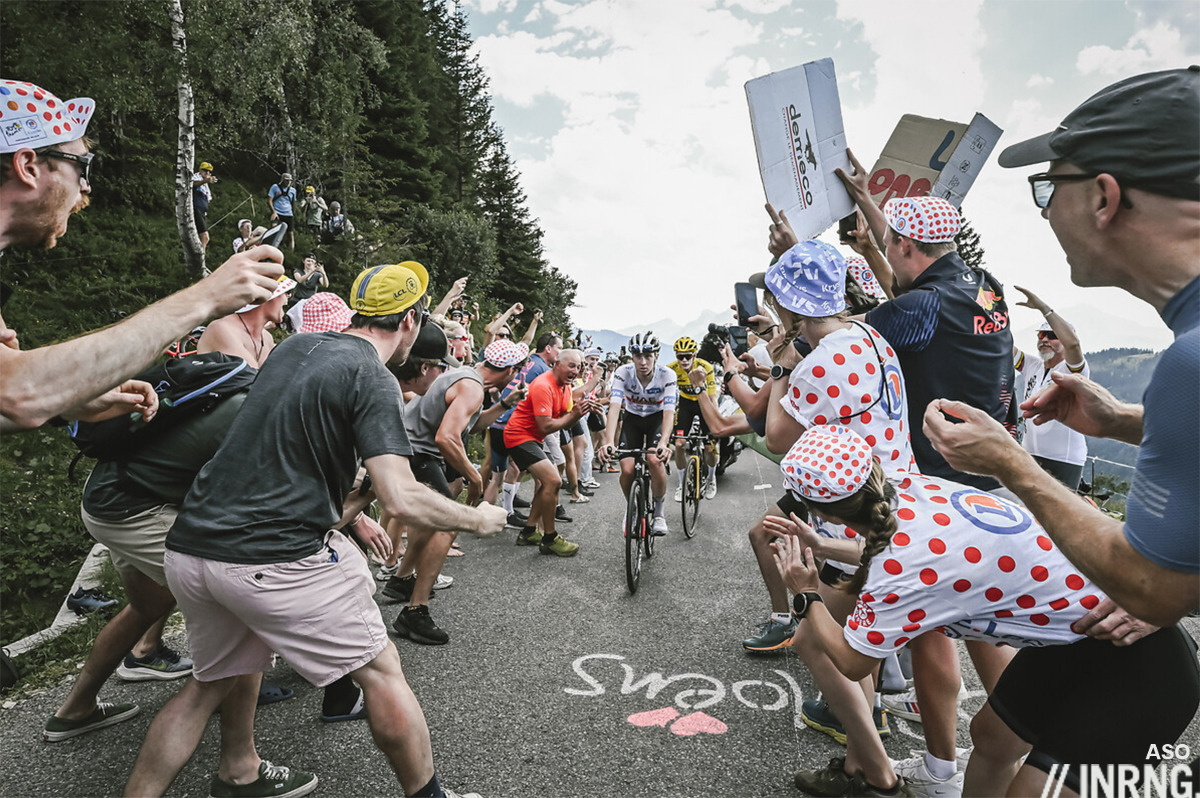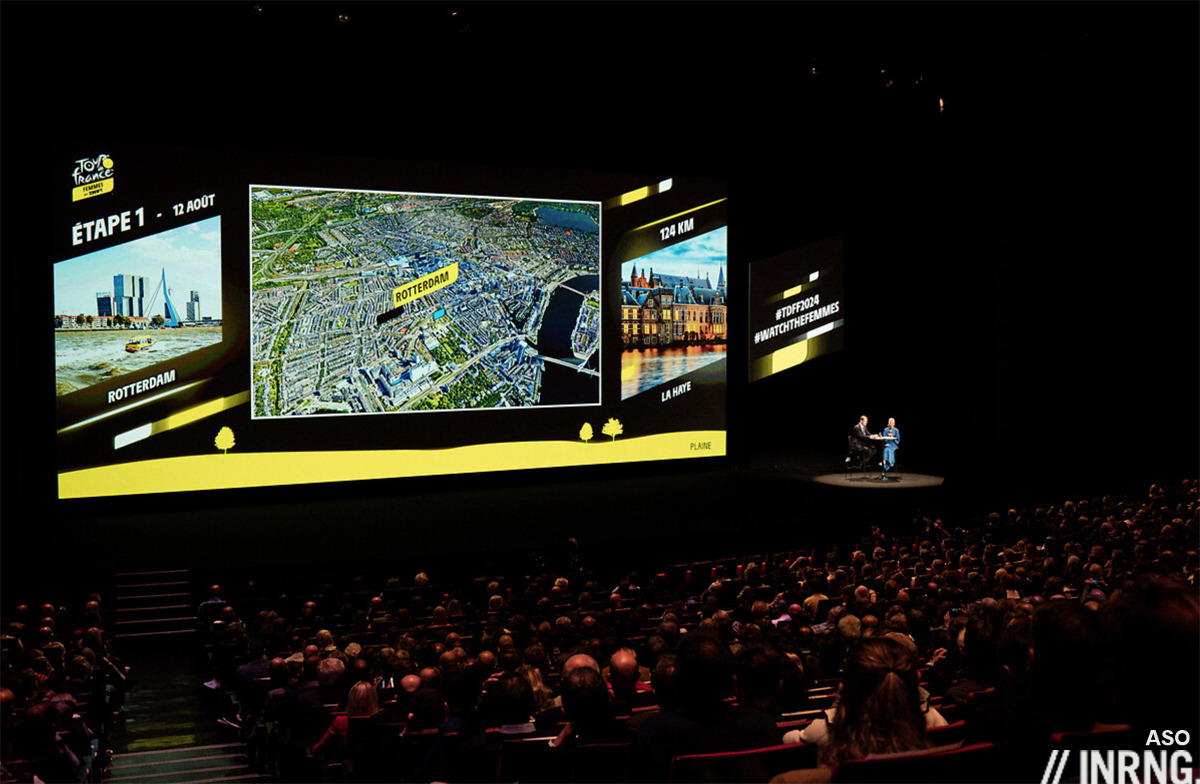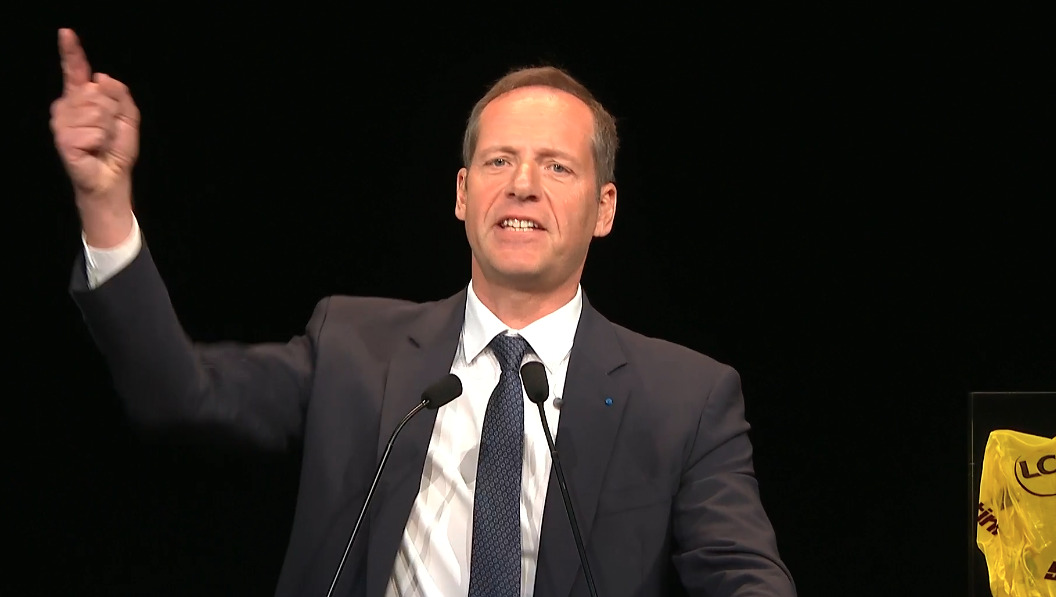Having looked at the route stage-by-stage here and here some more thoughts and notes on the 2024 Tour de France routes including an explainer on the Col de La Bonette and the Cime de la Bonette.
Tour of France?
Once again the route skips much of northern and western France. Sports-wise the race is all the better for it as the south has more varied terrain, or put the other way around, much of the north and west is flat. But as the cliché goes “the Tour de France is also a tour of France” and missing out on these areas once again is notable.
2025 looks set to compensate with a start in Lille, France’s most northerly city and then it’s said the race will cross to Brittany but presumably with pavé and probably the Mûr-de-Bretagne climb. We could also see the Tour de France Femmes starting in Brittany too, according to local newspaper Le Télégramme.
Déjà vu
If the Tour tries to visit all parts of mainland France at least once every few years, there’s a certain familiarity with the route, ASO’s races can visit the same places several times. It’s obvious that the race will return to Pau as a big city close to the Pyrenees; Tarbes is smaller, Toulouse is further away. But the added déjà vu comes knowing the Paris-Nice, Critérium du Dauphiné and Tour de France Femmes routes. More than ever these races host some racing first and then the big show comes to town next year. Last March’s Paris-Nice had St. Armand-Montrond, St. Paul-Trois-Chateaux as well as the Nice finish of course, all of which are in next summer’s Tour. Last summer’s Dauphiné had a finish in the Ardèche which could host the final of the Tour de France Femmes in 2025 and so on. Look to next year’s Paris-Nice and Dauphiné routes for clues on the Tour in 2025.
Always two, never three
The “Prudhomme dogma” of never having more than two consecutive sprint stages is a real thing so when the race visits a flat area it can have two sprints but there has to be a gravel or cobbled stage, or a time trial… or a transfer out to the mountains.
Short Transfers
A year ago ASO said the 2023 edition had short transfers as a deliberate idea, both to please teams tired of long journeys before and after each stage, and an ecological gesture too. Does 2024 continue this? Yes because there’s no flight or big transfer to Paris is the obvious point. Probably yes again for the daily journeys, and it looks like there will be instances where teams and the rest of the caravan are in the same hotel for more than one night.

Le gravel
32km of gravel is plenty in a 199km stage, much like 55km of Paris-Roubaix is cobbles. Just as plenty happens on the tarmac sections in between the pavé on the way to Roubaix, Stage 9’s tarmac sections could count for plenty. While Paris-Roubaix’s cobbled sections often end by joining a large road, the Troyes gravel sections regularly eject riders onto a farm backroad that’s narrow and twisty, especially the later sectors.

San Paris, a precedent?
Now that the Tour isn’t finishing in Paris, could a finish outside of Paris become a regular thing? Sure, as the race isn’t bound to finish in Paris, even if the final stage is very photogenic. If yes, perhaps real question is where. Tour boss Christian Prudhomme was quick to praise Nice as a worthy location – of course – but he has a point, the race probably has to end somewhere special rather than a ski resort or a provincial market town.
Paris will always be Paris
The Champs Elysées are being reworked, the idea is to make a more pleasant boulevard rather than the highway it is today. Works are expected to finish in time for the Olympics but there’s talk of a second phase after. Paris needs a special avenue for military parades so the Champs are likely to be remain race-able… at least once the works are done, these could be the excuse to move the race.
Nothing new?
If the map looks different without Paris, the race doesn’t seem to have any new innovation or rule-tweaking. There was talk that Stage 7 could be a team time trial and if this was the case, maybe they could have used the rules tried in Paris-Nice back in March? But no, a standard solo TT. The special 3-2-1 bonus sprints remain for a handful of stages but are probably not going to define much, the UCI rules limit them to 3-2-1 seconds.
The only difference is the waiver for the Tour de France Femmes having two stages in a day, this requires a waiver of UCI rule 2.6.010. “Split” or “half” stages used to be a thing but were banned because of the hassle, riders especially got tired of them with the Tour sometimes having three stages in a day as a ruse to bank more hosting fees and in 1978 the peloton went on strike. This was back in the day when the Tour wasn’t the business juggernaut as we know it today and where hosting fees are handy but not game-changing for the race.

Crowd control
The changes come elsewhere with a plan to rope off more of the mountains to keep the crowds back. Put metal barriers in place and it seems many people avoid them and walk to parts of the mountain without barriers. But a rope is a compromise, a physical block but not as imposing. And if the crowd swells, as if further anticipating problems, all motos except the TV camera could be halted under a new “Super pool” protocol. One incidental factor that could help further is the route: a lot of the Alpine climbs are more remote. Last summer’s climbs like the Joux-Plane are much closer to bigger population centres.
Gold or green?
We often see sprinters bail on the Giro d’Italia once the mountains arrive, some will even have their flights home booked long in advance as the third week offers few rewards. Could we see the same here because those with ambitions for the Olympics might be tempted to get out while they’re still fresh. Not that the Paris course suits all sprinters and team size is limited these elements come into consideration but still, the likes of Jasper Philipsen, Mads Pedersen, even Christophe Laporte could bail.

Stage 11: Puy Mary or Pas de Peyrol?
Puy Mary is a mountain and the Pas de Peyrol (“Peyrol step”) is the mountain pass on the way up.
Stage 19: Col de la Bonette or Cime de la Bonette?
This is again a mountain pass vs nearby peak issue. The Col de la Bonette is the mountain pass that sits at 2,715m, only the Agnel and Iseran are higher in France. Cime in French means summit – like cima we see in the Giro – and here it relates to a nearby mountain peak. As you can see on the map above there’s the col and then just to the south of this, a small road that climbs to 2,802m as it rides around peak, this is the road we label the Cime de la Bonette but it’s not a pass. To avoid tripping up just call it La Bonette.
Prudhomme… président?
Christian Prudhomme’s speech reached a peroration with him citing Philippe De Gaulle and punching a fist in the air as he proclaimed that the Tour de France is special because it rallies people together. Reading this here will be a bit dry, but in the moment it could have been the end of an election rally. Who knows if Prudhomme has any electoral ambitions, more likely he wanted to stir the crowd which includes many mayors and other elected figures during a fractious period for politics in France and beyond and the Tour is something they can unite around.




“The only difference is the waiver for the Tour de France Femmes having two stages in a day, this requires a waiver of UCI rule 2.6.010.”
Some things never change I guess? A different group of “convicts of the road” to be exploited. Not OK for men, but just fine for women. Really? Looks like the women need a rider’s union with cojones as much as the men do.
I’ve always thought M Prudhomme was a decent public speaker. In an ideal world you’d need other skills to be a politician, but recent history seems to suggest otherwise…
At least Prudhomme also has a track record of organising a massive, successful event on an annual basis. Whereas the populist politicians only seem capable of organising the fragmentation of society. On this basis I think he’s be a much better politician than most!
“UCI rules limit bonus sprints to 3-2-1 seconds”. I would love to know why (and how) this rule was arrived at, what reasons, concerns and debates existed on the issue, and to have the rule debated again publicly.
Are they riding the ring around La Bonette or just the lower one, it looks quite a nice surface on the street view be a shame to not use it all
Hopefully there are fewer cojones in the women’s pro peleton.
Sorry, that was meant as a reply to Larry
Ever ridden with any women pros? You’d be surprised I think 🙂 Then there are the Spanish women footballers!!! I wouldn’t mess with them!!!
for sure, look what’s happened to the last guy who tried to kiss one
He was rightly removed from his position for sexual assault. It took far too long for the authorities to do this.
Would you like your boss to kiss you whenever they feel like it?
There is more than one race on the calender and what has caught my interest at the moment is what WVA might do at the Giro.
I am also hoping that Pogacar returns to finish the job at Leige.
Exactly this. The sport can’t move on from the obsession with the Tour. Cycling exists the other 49 weeks of the year…..
I’m happy there are guys like MVdP and WVA to prove one can make a pretty good career (and living) without TdF being an obsession.
I’d love to see either or both make winning all 5 Monuments a goal:-)
I agree. WVA’s monument haul is not too impressive, and he’s far more likely to have success chasing those (and could do all five, possibly) than he is trying to win a grand tour at his weight.
Small typo @inrng, “Sans Paris” would be much better here – even if we won’t be very far from Italy 😉
I’d like to see that kind of final stage more often in the future, as the traditional one has close to no interest in my opinion, sportswise at least. Nice nearly always provides thrilling finishes in PN, I can’t imagine it otherwise at the next TDF, even after 3 weeks of hard racing. Might even make things more spectacular, if the GC guys aren’t cooked (which they weren’t in the past few years…).
I’d be glad if that could make ASO think about some changes – Grenoble, Pau, Saint-Etienne, Annecy, Lyon and others would make perfect candidates for a final stage too, not too small nor too far from the high mountains, and offering some challenging terrains.
But there’s the symbolical / political / VIP side of things to consider of course, and Prudhomme has proven to be caring a lot for the Tour’s legacy and traditions, one might even say he’s posing as a “gardien du temple” (even if not always acting so).
On that matter (as well as on the topic of Prudhomme’s political stature and ambitions) there’s been an excellent yet frustrating article in last summers’ “Pédale” magazine (in french, don’t know if there’s a translated version made avalaible for english readers).
It shows how much political of a position it is to be at the head of the TDF, which we already knew, and how good Christian Prudhomme is at the job, as we might have guessed, in the old french “à la Chirac” fashion : drinking, eating, chatting how much is needed to make sure everyone is feeling considered.
What’s frustrating is, that the man is so good at it, always humble and better at praising “la grande histoire du Tour” than talking about himself, that you ultimately don’t know what are his ambitions like, apart from being a fellow servant of the TDF’s legacy. It could be very well so, but who knows 🙂
Since it’s my first comment here I’d like to thank you @inrng for all the work you have put in this blog so far, it’s always well-informed, wit-spirited and full of hinsights, a very interesting and pleasant read all year long.
Great comment, please speak up again!